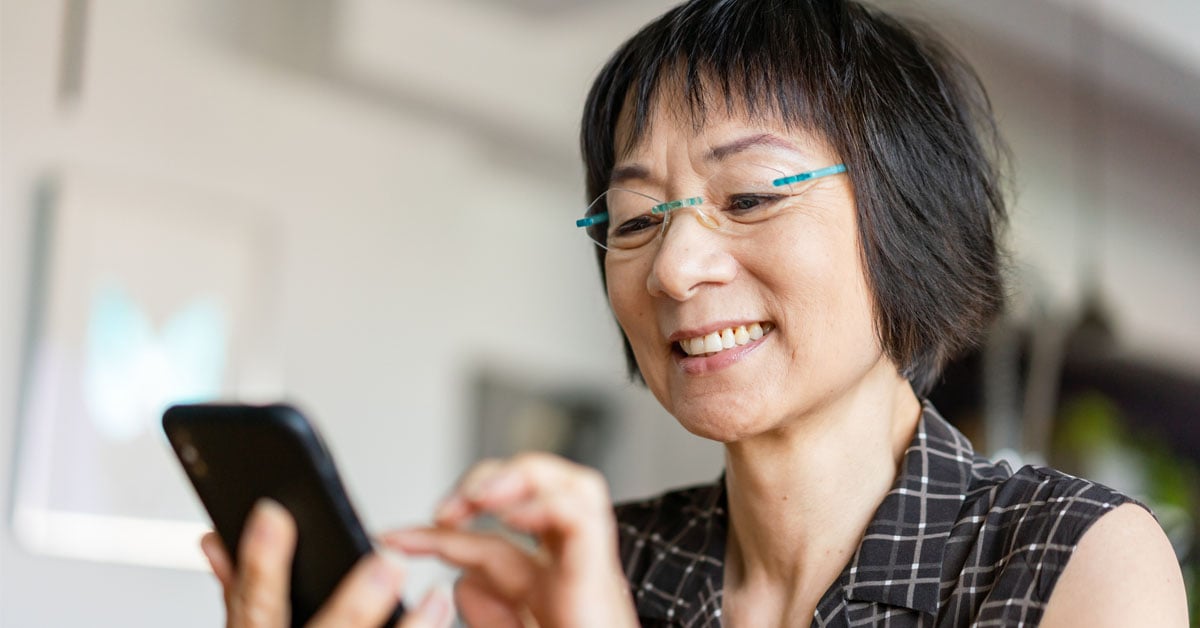
They are in our pockets, our purses and even our homes. In fact, you’re looking at one right now as you read this. No, this isn’t a setup for a horror movie: we’re talking about screens!
According to a survey by the Pew Research Center, 96% of Americans have a cell phone, 81% of which are smartphones. In addition, 74% own a home computer and 52% own a tablet or e-reader. That all adds up to Americans spending an average of 444 minutes (7.4 hours) per day looking at screens--that’s more than the time we spend sleeping!
So what is all this screen time doing to our eyes? We look at screens so much, the thought might not have even crossed your mind. But think of it this way: you wouldn’t stare at the sunny sky without sunglasses, right? Your eyes deserve the same level of protection from prolonged screen exposure as well.
Today, we’re going to take a deep dive into how screen time affects our vision and what you can do to keep your eyes safe.
Let’s talk about blue light
It’s hard to see with the naked eye, but our screens emit a type of light called “blue light.” Blue light has a wavelength of 380-500 nanometers, making it one of the highest intensity wavelengths humans can perceive. These strong waves penetrate deep into our eyes and create a glaring effect, which can result in irritation and strain.
In fact, 59% of adults report experiencing the symptoms of a condition called “digital eye strain.” These include:
- Headaches
- Dry eyes
- Eye strain
- Blurred vision
- Neck and shoulder pain
Technology is evolving rapidly and as a result, there is still inconclusive evidence about the further damages caused by blue light and prolonged screen exposure. Some studies have claimed it causes damage to retinal tissue and has increased the number of people who become nearsighted.
But until we know more for certain, it will definitely benefit you to follow these three simple precautions to help reduce the amount of screen time strain on your body.
Filter out blue light
Fortunately, almost all devices these days come equipped with a blue light filter that you can turn on at any time. A good strategy is to have it turned on automatically at sunset so there is less strain on your eyes at night. This is because light disrupts our circadian rhythm (our biological clock) at night and the stimulation is a huge contributor to lack of restful sleep.
There are also prescription and non-prescription lenses you can purchase that help filter out blue light. These may be especially helpful if you work at a computer for long periods of time. Your eye doctor can help you find the solution that works best for your lifestyle.
High-five your screen
No, really! Most of us hold our phones eight inches from our faces, which can cause strain on our eyes. Instead, try holding your screen 16-18 inches from you—high-five your screen as a rough guide. If you are having a hard time seeing the text, adjust the font size in your screen settings.
Employ the 20/20/20 rule
Whether you are hard at work writing an email or playing a game on your phone, it is important to give your eye muscles a break, especially when you are in the zone!
Just remember 20/20/20: for every 20 minutes of screen time, look away for 20 seconds at something 20 feet away from you. Think of it as the vision equivalent of stretching after sitting for a long time.
The bottom line: Too much blue light as a result of screen time can cause many harmful effects of digital eye strain. Filter out blue light on your devices or eyewear. Keep your device screens a high-five’s distance from your face. Your eyes also have muscles that need to be stretched: remember the 20/20/20 rule.
This article has been updated from its original publication date of 7/2/2020.
